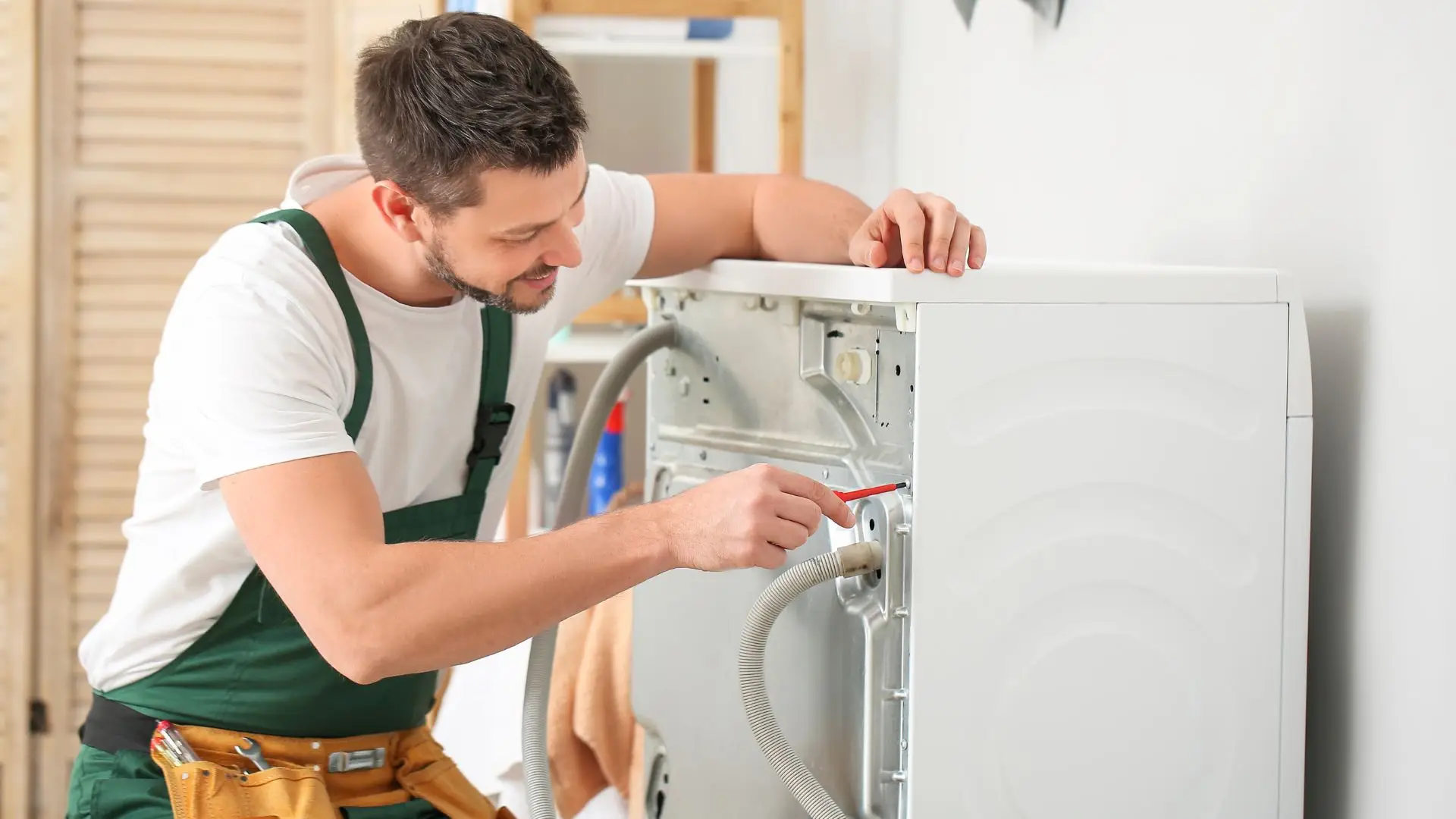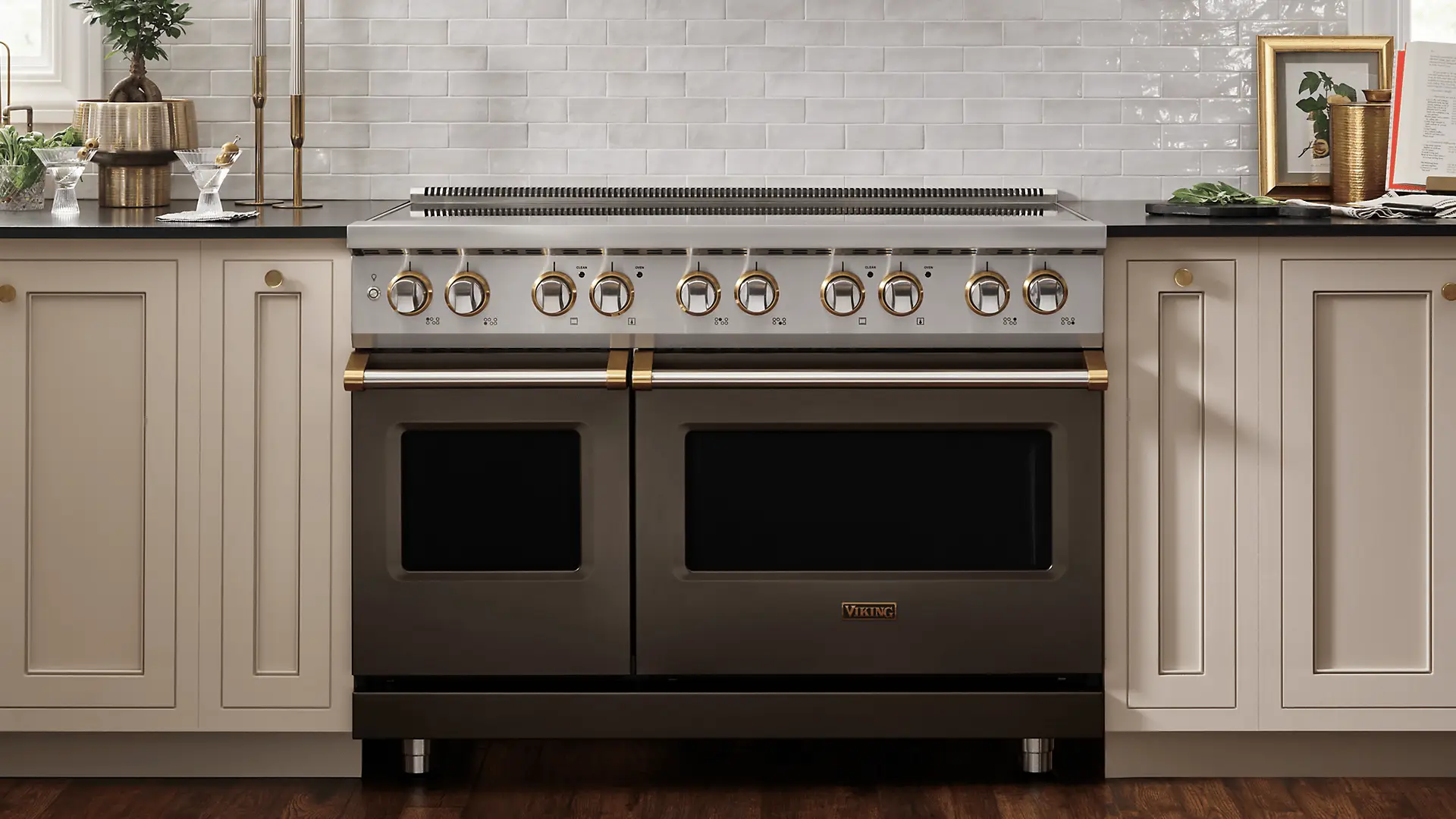Are you committing at least one of this list’s 12 most common appliance mistakes?
You better not if you want to maximize the efficiency and longevity of your appliances…
But how could you know… If you haven’t read this guide yet?
Let’s explore the nuances of appliance care to ensure that your kitchen and laundry appliances serve you well without draining your wallet or your sanity.
Installation and Usage Errors
#1 – Not Measuring Your Space
Before you get lost in the allure of a new appliance, remember to measure.
That’s right, measure your space.
It’s surprising how many folks overlook this step, only to find out their new fridge or oven is too tall, wide, or deep.
This mistake can lead to more than just a tight squeeze; it can hamper air flow, causing appliances to run harder and hike up your energy bills.
Always measure the width, height, and depth, to ensure there’s enough door clearance.
#2 – Skipping Professional Installation
Sure, you might think, “How hard can it be to install an appliance?”
But trust me, it’s more than just plugging in a cord.
Skipping professional installation can be equivalent to setting up your dental braces – it might seem doable, but the risks are high.
For instance, improper gas line connections on a stove can lead to leaks, and a dishwasher installed without the right leveling might not drain properly, leading to water damage.
Professional installation such as the one provided by Uptown Appliance Repair ensures that your appliance runs at peak efficiency from day one, potentially saving you from costly repairs down the line.
#3 – Ignoring Door Seals and Swings
The door seals of your fridge and oven are more than just a barrier; they’re crucial for maintaining efficiency.
Similarly, if your oven door doesn’t seal properly, you’re not just letting heat escape; you’re also compromising cooking efficiency and potentially increasing energy costs.
Always ensure doors can swing open freely without obstructions, and check seals for wear and tear regularly.
Misunderstanding Appliance Features and Settings
#4 – Inappropriate Temperature
Setting your freezer, fridge, and ice-maker temperatures correctly isn’t just about keeping your food fresh; it’s about energy conservation too.
Many set their fridge too cold, under the false belief that colder is better. However, the ideal temperature for a fridge is between 35°F and 38°F, and for a freezer, it’s 0°F.
Adjusting your fridge to a lower setting than necessary doesn’t preserve your food better; it just hikes up your electricity bill.
Misunderstanding these settings can lead to an unnecessary 10% to 15% increase in energy consumption, and you can certainly avoid it.
Just make sure to always align the temperature with what’s recommended for food safety and energy efficiency.
#5 – Overcomplicating with Unused Features
More features often mean higher costs, both upfront and in maintenance.
Yet, it’s a common error to get swayed by bells and whistles that you’ll rarely, if ever, use.
Take, for example, the built-in water or ice dispenser in refrigerators.
Instead of being lured by these features, focus on what you’ll use daily.
Prioritize functionality like adjustable shelves, quiet operation, or models that offer the best energy efficiency for your needs.
Neglecting Appliance Hygiene
#6 – Forgetting to Clean/Wash
Regular cleaning of your appliances is not just about aesthetics; it’s about functionality and efficiency.
Neglecting to clean can lead to a buildup of grime, mold, and bacteria, which not only affects performance but can also transfer to your food.
Establishing a cleaning schedule is wise:
- For Refrigerator: Clean coils every six months to ensure efficient cooling.
- For Oven: Monthly cleanings prevent grease buildup which can lead to smoke or fires.
- For the Dishwasher: The filter should be cleaned every month to avoid clogs and maintain cleaning effectiveness.
Remember, an appliance that’s clean on the inside/outside works better and lasts longer.
#7 – Incorrect Cleaning Methods
Cleaning your appliances might seem straightforward, but using the wrong methods or products can lead to costly damage.
Harsh chemicals like bleach or ammonia, for example, can corrode the finish on stainless steel appliances, creating a dull, pitted surface that’s difficult to clean and unsightly.
Instead, opt for gentle solutions.
A microfiber cloth with mild soap or vinegar can tackle most everyday grime effectively.
Even for tougher spots, a paste of baking soda and water offers a non-abrasive cleaning power that won’t harm the appliance’s surfaces.
It’s also crucial to follow the manufacturer’s recommendations.
They often specify cleaners that won’t void warranties or damage the appliance. \
Ignoring these guidelines could mean you’re inadvertently setting the stage for efficiency issues or mechanical failures down the line, not to mention aesthetic degradation.
Maintenance Oversights
#8 – Forgetting to Replace Essential Parts
Appliances have parts that wear out over time, and neglecting to replace these can lead to reduced performance or failure.
Take, for example, water filters in refrigerators.
These filters need changing every six months to ensure your water and ice are clean and to maintain the appliance’s efficiency.
Similarly, dryer vents should be cleaned annually to prevent lint build-up, which can not only decrease efficiency but also pose a fire risk.
Remember, replacing parts like belts, seals, and filters isn’t just about maintaining function; it’s about safety and energy savings too.
#9 – Skipping Regular Service
Regular professional servicing is essential for the longevity and efficiency of your appliances. Skipping these check-ups can result in small problems growing into costly repairs.
Service visits can detect issues like a failing compressor in your fridge or a clogged drain line in your washing machine before they escalate.
Moreover, many manufacturers stipulate regular maintenance to keep warranties valid.
Signs that service might be overdue include unusual noises, increased energy consumption, or if the appliance isn’t performing as expected.
Proactive maintenance is key to extending the life of your appliances.
#10 – Not Adhering to Manufacturer’s Guidelines
The manual that comes with your appliance isn’t just filler; it’s a guide to ensuring your appliance functions at its best.
Ignoring these guidelines can lead to misuse, inefficient operation, or even damage.
For instance, many manufacturers specify a maximum load capacity for washing machines; exceeding this can strain the machine’s components, leading to mechanical failure.
Additionally, using the wrong type of detergent or not following the recommended cycles can affect cleaning performance and machine durability.
Commonly ignored instructions include not cleaning the lint trap in dryers after each use, which increases fire risk, or failing to defrost a freezer regularly, which can cause energy inefficiencies.
Always take the time to read and follow the manufacturer’s advice to ensure your appliances perform optimally and last longer.
End-of-Life Appliance Management
#11 – Failing to Recycle Properly
When your appliance has reached its end-of-life, improper disposal can have severe environmental consequences.
Old appliances often contain refrigerants like Freon, which can deplete the ozone layer if not disposed of correctly.
According to the EPA, appliances not recycled properly are responsible for millions of pounds of greenhouse gas emissions annually. Instead of simply tossing your old fridge or washer in the trash:
- Recycle: Check with local waste management or recycling centers for proper appliance recycling programs.
- Donate or Sell: If still functional, consider donating to a charity or selling to someone who might need it.
- Manufacturer Take-Back Programs: Many brands offer recycling programs where they take back your old appliance when you purchase a new one.
Remember, responsible recycling not only helps the environment but can also ensure that hazardous materials are managed correctly.
#12 – Not Planning for Replacement
Deciding when to replace an appliance isn’t always straightforward, but some signs indicate it’s time for a change:
- Age – Most appliances have a lifespan; for example, refrigerators typically last around 13 years (Source: National Association of Home Builders).
- Repair Costs – When repair costs start to approach or exceed the price of a new appliance, replacement might be more economical.
- Efficiency – Older models might not be as energy-efficient, leading to higher utility bills. Replacing them can save on energy costs over time.
Planning for replacement involves assessing these factors and perhaps setting aside funds for new purchases.
It’s also about anticipating the future; and considering technological advancements that could offer better efficiency or features.
Transitioning smoothly involves scheduling the removal of the old unit, ensuring compatibility with your home’s electrical or plumbing setup, and possibly coordinating with professional installers for large appliances.





